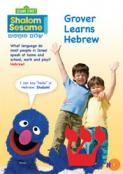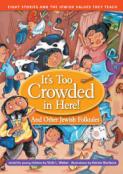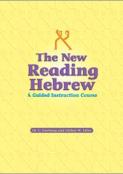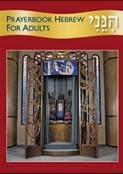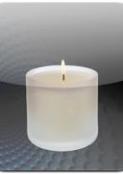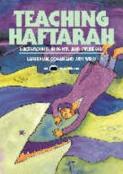- Home
- Play & Learn Home
- Online Enrichment
- Experience Modern Israel
- Israel It's Complicated
- Jewish and Me
- Jewish Holidays Jewish Values
- Jewish Values in Genesis and Jewish Values in Exodus
- Min Ha’aretz
- Our Place in the Universe
- Simply Seder
- The Prophets: Speaking Out for Justice
- Making T'filah Meaningful
- Make, Create, Celebrate
- Yom Haatzmaut Resources
- Hebrew Apps
- About The OLC
- What is the OLC?
- Introduction
- Get Started
- Resources
- OLC Content
- Parent Materials
- See My OLC Classes
- Store
Playing Card Games With Shuffle It in Hebrew
Kids love playing card games. Perhaps that’s why Shuffle It in Hebrew cards are so popular with pre-K to fourth graders. They have a blast playing "Magic Threes," "Match Me!" and "Hit the Hay," while educators are delighted to see their students refining their Hebrew skills (letter recognition, decoding, word comprehension, and categorization) while they’re having fun. The cards are especially effective as enrichment for small groups or for students who arrive for class early or finish their work quickly.
Educators have also reported giving the cards as:
-
Kindergarten graduation gifts
-
Religious school Hanukkah gifts
-
Prizes and incentives for elementary grades (at the Purim carnival, for perfect attendance, to members of the Hebrew reading club)
At the NATE conference in Newport Beach in January, we held a contest to see who could suggest the most creative card games to enhance the games that are included with the cards. Among the top entries were:
GO FISH!
Number of players: 2 to 8
Object of the game: "Fish" for cards and read the words correctly to keep the cards. Player with the most cards wins.
How to play: Play "Go Fish!" with students learning Hebrew terms related to family, holidays, and colors. Select the appropriate Shuffle It in Hebrew cards, affix a magnet to the back of each one, and place the cards in a "pond"—a plastic tub filled with blue styrofoam "peanuts" or crumpled blue construction paper. Make a fishing pole by tying a piece of string to the end of a stick and attaching a magnet to the end of the string. Have students "fish" for cards, then read aloud the word on the back of the card they "catch." Students who read the words correctly may keep the card. If the card is read incorrectly, the student places it back in the pond. Player with the most cards wins.
Anne Berman-Waldorf
Congregation Beth Chaim
Princeton Junction, NJ
TELL ME A STORY
Number of players: 3 to 6
Object of the game: Build a story using the words on the cards.
How to play: Place a deck of cards face down. One player turns over the top card, which remains face up. That player begins a story by saying a sentence in English incorporating the Hebrew word on the card. The next player turns over a new card and adds another English sentence incorporating the new Hebrew word. Continue until everyone in the group or class has had a turn.
-
Variations: Assign a Jewish theme for the story.
-
Have students repeat the previous sentence and then add their own sentence to build the story.
Anonymous
IT’S MINE!
Number of players: 3 or more
Object of the game: Person with the most cards wins.
How to play: Give students two decks of cards but have them use only two of the suits. One player deals out the cards. Players place their piles in front of them face down. To start the game, everyone turns over their top card so that it is visible to all players. If a player sees the same card in someone else’s pile, he or she calls out the Hebrew word on the card. The player who calls out the word first gets the other person’s pile. Then players turn over their next card. When all the cards are used up, the person with the most cards wins.
Anne Stein
Etz Chaim
Lombard, IL
THE GAME OF CHAI!
Number of players: 3 to 6
Object of the game: First player with cards that add up to the numerical value of Chai (18) wins.
How to play: Shuffle the deck of cards and place it face down. Players take turns drawing cards and place them face up so that they are visible to all players. The first player whose cards add up to exactly 18, calls out "Chai!" If the numerical value of the card chosen exceeds Chai, the player must put the drawn card face down in another pile and wait his or her turn to draw again.
Challenge: Player who reaches Chai must read the Hebrew words on the cards correctly to win the game.
Amy Appelman
Temple Israel
West Bloomfield, MI
WORD ASSOCIATION
Number of players: The whole class
Object of the game: Recall Hebrew vocabulary.
How to play: The teacher or a student holds up a card. Students volunteer to read the Hebrew word and, if they read correctly, to name a Hebrew word related to the word on the card. For example, if the card shows ("bee"), the student may call out ("honey") or ("flower") or any other Hebrew word related to "bee." If the card shows ("tree"), the student may call out ("tree of life") or any other term related to "tree."
Rebecca Zimmerman
Peninsula Temple Beth El
San Mateo, CA
THUMB COVER-UP
Number of players: The whole class
Object of the game: Be the first player to travel back to his or her original seat by naming the Hebrew words on the cards.
How to play: Students sit on chairs in a circle. Select one student to be a "world traveler" and to stand behind a neighbor’s chair. Hold up a card but cover the Hebrew word in the top left corner with your thumb. If the student standing identifies the object first, he or she travels clockwise one place around the circle. If the student sitting in front of that student identifies the object first, he or she switches places with the standing student and attempts to be the one to go round the world—back to his or her
original seat.
Rebecca Zimmerman
Peninsula Temple Beth El
San Mateo, CA
Rebecca Zimmerman and Amy Appelman win Behrman House stuffed lions in the playing cards contest.
And here for your students’ playing pleasure is a brand-new online "Concentration" game for the playing cards. We encourage you to forward the link to your students who can compete for the fastest time against their peers all across the country.
If you have a Hebrew card game you’ve used successfully with Shuffle It in Hebrew, let me know by emailing terry@behrmanhouse.com. We’d love to hear from you!

